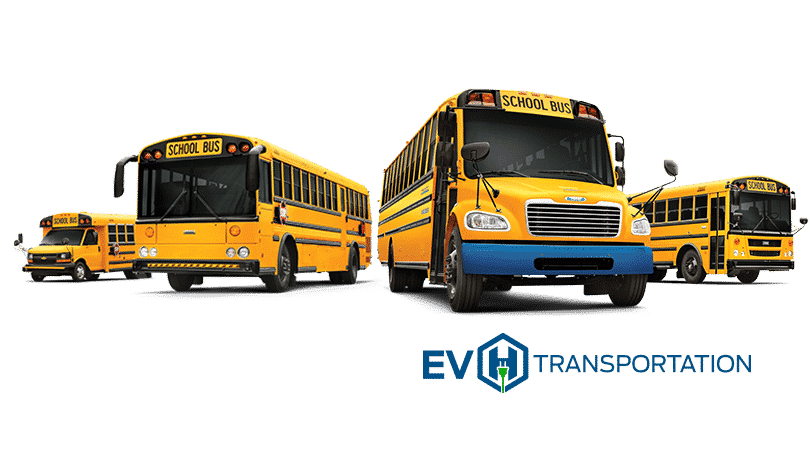
Leading national education and pupil transportation groups have formed the Electric School Bus Collaborative (E-SBC), aimed to incorporate more state and community perspectives about facilitating the transition to electric school bus fleets across the country.
The Collaborative is comprised of AASA, The School Superintendents Association, the Association of School Business Officials International (ASBO) and the National Association for Pupil Transportation (NAPT). Its creation comes as the Environmental Protection Agency kicks off a $5 billion program to distribute rebates for districts to replace older diesel buses with cleaner and greener school transportation.
These organizations will work with and support school transportation directors, school finance and operations leaders, superintendents, and other state and local officials in assessing capacity to electrify school bus fleets, identifying operational and financial challenges, and highlighting the potential environmental and economic benefits of fuel-efficient, lower-emission school buses.
The formation of the Collaborative coincides with the announcement of the Biden-Harris Action Plan for Building Better School Infrastructure. As districts around the country are positioned to invest historic amounts of federal funding in improving air quality in schools, building outdoor learning spaces, and greening their building and transportation infrastructure, the Collaborative commends the Administration for its efforts to recognize and encourage school district leaders and communities’ efforts.
“The ESBC will be a nonpartisan source of information, education, and advice for school system leaders in the K-12 market space as they analyze and implement the transition to electric-powered school buses,” said Michael Martin, executive director of NAPT.
“As we work toward equity-based and future-driven best practices in our school systems, district leaders must ensure bold strategies that will positively impact how our young learners are traveling to and from school,” said Daniel A. Domenech, executive director of AASA. “This partnership is steadfastly committed to creating the most efficient means possible in how we transport our students who are living in urban, suburban and rural communities. We are excited to work with NAPT and ASBO International on this critical endeavor.”
“We are proud to join this Collaborative and share school district perspectives, challenges, and solutions to provide students safer, greener and more cost-effective school transportation services,” said David J. Lewis, executive director of ASBO International.
“We want to encourage the momentum, but with an understanding that it cannot be a one-size-fits-all proposition; there are differences in state education funding mechanisms and school bus operations from community to community,” Martin added.

